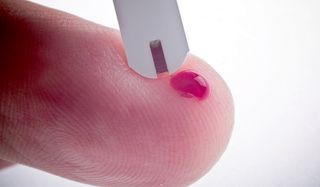Type 2 Diabetes More Common Among Low-Income Families

Being born into a low-income family may mean worse health later in life. Research has shown that those with low incomes are more likely to develop Type 2 diabetes than their richer peers, but the reason for this link has remained unclear.
Now, a new study finds that inflammation may be the key behind this connection, and that genetics plays a role.
"We've shown ... there might be a link going from socioeconomic status to inflammation, through gene regulation, and that finally leads to increased risk of diabetes," said lead author Silvia Stringhini, of the University Hospital of Lausanne in Switzerland.
Type 2 diabetes, which tends to develop in adults rather than children, occurs when body cells stop responding to insulin and become unable to use sugar in the blood.
The condition has been linked to excess weight and physical inactivity, but studies have shown that people who experienced socioeconomic adversity during their childhood tended to have a higher risk of developing this disease later in life, even when they didn't suffer from obesity and an unhealthy diet. Stringhini and her team wanted to determine why childhood poverty would have such a far-reaching effect.
The researchers used data from the Whitehall II study, which tracked clinical and social information from more than 10,000 people in London between 1991 and 2009. Every six years, all participants took an oral glucose test, and the researchers tracked which people developed Type 2 diabetes. They also took blood samples to measure key inflammatory proteins in the blood. To gather socioeconomic data, the researchers asked participants their job title, how much education they had and their father's occupation. [How Inflammation Affects Your Health]
Participants who had overall low socioeconomic scores were almost twice as likely to develop Type 2 diabetes over the course of the study than those whose scores were high. Furthermore, people whose life trajectories either started or ended in a lower class had an increased risk of developing diabetes as adults.
Sign up for the Live Science daily newsletter now
Get the world’s most fascinating discoveries delivered straight to your inbox.
While this finding may not be immediately surprising, Stringhini pointed out that typical diabetes risk factors, such as being overweight, physically inactive and eating poorly "explain about half of the socioeconomic status differences in the Type 2 diabetes," she said.
The other half was tied to inflammation, regardless of a person's weight or physical activity. People who had more disadvantaged lives overall had chronically higher levels of inflammatory proteins in their blood.
While obesity, lack of exercise, smoking and poor diet certainly contribute to chronic inflammation, the study points out that these lifestyle factors aren't the only culprits.
"The stress related to financial adversity — that of living in poor, unsafe and polluted neighborhoods, experiencing more stressful life events, or experiencing abuse and violence — [may contribute to] an exacerbated inflammatory responses in adult life," Stringhini said.
This discovery may point to new approaches to tackling the growing problem of Type 2 diabetes. "While this does not mean that we should stop trying to improve lifestyle behaviors in the most disadvantaged sections of society, we might try to recommend medications targeting directly inflammation," Stringhini said.
Other experts are not so sure. "Type 2 diabetes is a very complex disease," said Dr. Joel Zonszein, professor of clinical medicine at Albert Einstein College of Medicine in New York.
"There is no question that it is an inflammation-based disease," Zonszein said. But, he cautioned that the analysis of the data in the new study was not definitive enough to conclude that inflammation was a cause of Type 2 diabetes. "There is an interrelationship, but I don't believe it's a cause-and-effect relationship."
More research is needed to determine the role of inflammation in Type 2 diabetes, he said.
The study is published today (July 2) in the journal PLoS Medicine.
Follow LiveScience @livescience, Facebook & Google+. Original article on LiveScience.com.
